Transporting
agricultural machinery from one field to the next by way of
public roads is a necessity for many in agriculture. Motorists
unfamiliar with slow moving agricultural machinery can make
this a dangerous situation. The potential for an accident
is high. Equipment operators must be aware of the hazard their
use of public roads causes and take necessary precautions.
| Difference in Speed-Most farm machinery is transported at speeds of 25 mph or slower while other vehicles often are traveling at much faster speeds. This difference causes motorists to miscalculate how fast they are approaching farm machinery. Motorists sometimes do not even see farm equipment because they are traveling too fast. | 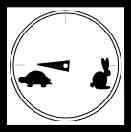
|
| Farm Size and Location -As today's farms and ranches increase in size, land farmed is often separated by long distances, necessitating the need to transport of farm machinery on public roads. | |
| Size of the Machinery- Today's large equipment sometimes overlaps into other lanes, creating a hazardous situation. | 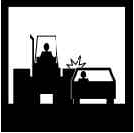
|
| Poor Visibility -Corners, hills, and other blind spots reduce a motorist's ability to see farm and ranch equipment either traveling on the roadway or pulling onto a roadway. Dirty windshields on equipment also reduces operator visibility. | |
| Unskilled Operators -Because of today's large and complicated equipment, skillful operators are a must! The operator must be attentive and react quickly if needed when moving along roadways. | |
| Motorists Unfamiliar with Slow-Moving-Vehicle (SMV) Signs-Motorists may not slow down when approaching a slow-moving farm machine. Because of this accidents frequently occur between farm equipment and motorists traveling in the same direction. | |
| Improper Trans-port Techniques - Failure to securely tie down equipment on truck beds or transport trailers can cause equipment to slide off when going around a curve or when turning, especially when traveling at high speeds. | 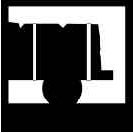
|
| Outdated Equipment -Some older equipment may only have minimal lighting or markings or the lights may not be working. | |
| Towing Equipment Too Fast-The equipment may start to sway, causing the operator to lose control. Towing implements only with a chain can be extremely hazardous, especially if there is no means to provide tension other than applying brakes. | 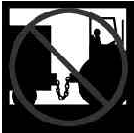
|
| Poor Road Conditions -Potholes, ditches, rough roads, and wash-outs can throw the operator off the machine, or cause the operator to lose control. | |
| Extra Riders - Riders on equipment can fall off and be run over by oncoming traffic, or by the farm machine itself. Dogs and other animals falling out of transport vehicles also create hazards to motorists. | 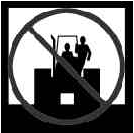
|
| Poor Maintenance of Machinery -Tractors in poor repair, with no brakes or bald tires, are extremely hazardous. | |
| Time of the Year -Heavy seasonal use by equipment and other vehicles such as during planting, haying, and harvesting increases the potential for an accident. | |
| Prevention of Road Accidents | |
| 1. Train equipment operators about proper machinery operation and use. The operators should be licensed drivers and should know and obey the laws and rules of safe driving and of farm machinery operation on public roads. The operators must obey the same laws as motor vehicles: stopping at stop signs, signaling direction, obeying speed limits, etc. | |
| 2. Maintain equipment properly: check brakes, tires, lights, and steering to make sure they are working properly. | |
3. Each tractor and piece of equipment must have the proper
lighting to be transported or driven on public roads.
Make sure these lights can be seen. The American Society
of Agricultural Engineers recommends that:
b. Mount two flashing amber lights at least 42 inches high in both front and rear. These can be used as signal lights as well. c. Place on rear left at least one red taillight. If two red lights are used, mount the other as far right as possible. d. Mount two red reflectors that are visible from the rear. If towed or mounted equipment obscures the rear lights, mount two flashing amber lights on the equipment as far apart as possible. Modify older machines to conform to state lighting laws. |
|
| 4. If a public road crosses your farm yard, install warning signs and/or flashing amber lights at points down the road that can be activated from the house, machine shed, or barn to warn motorists that farm equipment is crossing the road ahead. | |
| 5. See and be seen. Clean off wind-shields and lights. Clear away blind spots where machines enter and leave the roadway so that motorists can see the machinery from a distance (this includes intersections that have tall trees or crops along the road). Turn lights on at dusk or in times of poor visibility such as fog, rain, blowing dust, or cloudy conditions. Use flashers when on roadways. Have pilot vehicles ahead and behind wide equipment. Replace damaged or faded SMV signs. | 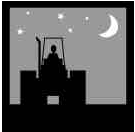
|
| 6. Use slow-moving-vehicle (SMV) signs. This is the universal sign to warn motorists that a slow-moving-vehicle is ahead. Remember that SMVs are to be used on vehicles traveling slower than 25 mph. | |
| 7. Before entering the roadway, stop and look both directions. Make sure you have enough time to cross the road or enter the road if traffic is coming or is close. It takes a tractor about 10 seconds to cross a road. A car going 55 mph will travel about 800 feet in that time span. If you have a rear light turned to white for field work, turn it off or to red before entering the roadway. | |
| 8. Be aware of the road conditions. Know where the hazards exist before you start, such hazards include potholes, ditches, washouts, narrow bridges, blind corners, and sharp curves. Look out for mailboxes and road signs. Trying to avoid these may cause you to drive in the other lane. Be aware of traffic in both directions. Know how wide your equipment is and the route you are planning to take. | 
|
| 9. Slow down when leaving the road. Turning too fast can whip the towed equipment into the path of oncoming traffic or cause a side overturn. | |
| 10. Do not allow extra riders at any time for any reason. Extra riders can be easily thrown off and injured by the farm machine or oncoming traffic. | |
| 11. Go down a steep hill in the same gear that you used to go up the hill. This will help maintain control of the machine and the load. Equip large trailers or equipment with separate brakes since your tractor or truck may not have the braking power to stop a free-coasting trailer. | 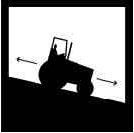
|
| 12. Securely tie down equipment to transport trailers and truck beds. When transporting equipment on trailers or in trucks, slow down around curves since equipment may shift and break the chains holding it, especially large tractors or implements. Use trucks and trailers with beds wide and heavy enough for the load. Also, use proper sized chains and tie-down clamps. | |
| 13. When towing equipment, make sure it is secure by using safety chains on the tow bars. Use the proper size ball and hitch assembly. Lock tractor brake pedals together to ensure adequate braking on both wheels when traveling down roadways. | |
| 14. Maintain speeds that are appropriate for the area, the road conditions, and the time of the year. | |
| 15. Prepare implements for transport. Raise hydraulic wings and lock them in place. Relocate hitch points, remove headers, and do what is necessary to make equipment narrower for the road. Also, perform a pre-trip road check on the machinery. | |
| 16. Assist large machines, such as combines, with pilot vehicles equipped with flashing amber lights and signs warning of an oversized load. | |
17. Drive slow moving vehicles as far right as possible
but stay on the road. Traveling on the shoulder may be
hazardous for two reasons:
b. The shoulder may be soft or may have ruts or potholes causing the operator to lose control. Slow down to let vehicles pass and get as far over as safely possible. Stop until all vehicles pass you. |
|
| 18. Stay off public roadways with farm machinery after dark unless absolutely necessary and then only when your vehicle and equipment is adequately lighted for night travel. | |

|
Written
by Tom Karsky, University of Idaho, and A. K. Jaussi, former
graduate assistant, Washington State University. For more information
about farm safety, please contact:
| Published December 1998 | Harvesting Hay and Forages |
Disclaimer and Reproduction Information: Information in NASD does not represent NIOSH policy. Information included in NASD appears by permission of the author and/or copyright holder. More